Tokyo’s sprawling, concrete laden expanse often seems to go on forever, but when one does finally escape it, the scenery can change quite dramatically. Like this tiny village a few hours drive from the capital. A small group of houses nestled on the slopes of a tree covered mountain. An environment a whole world away from that of the nearby capital.
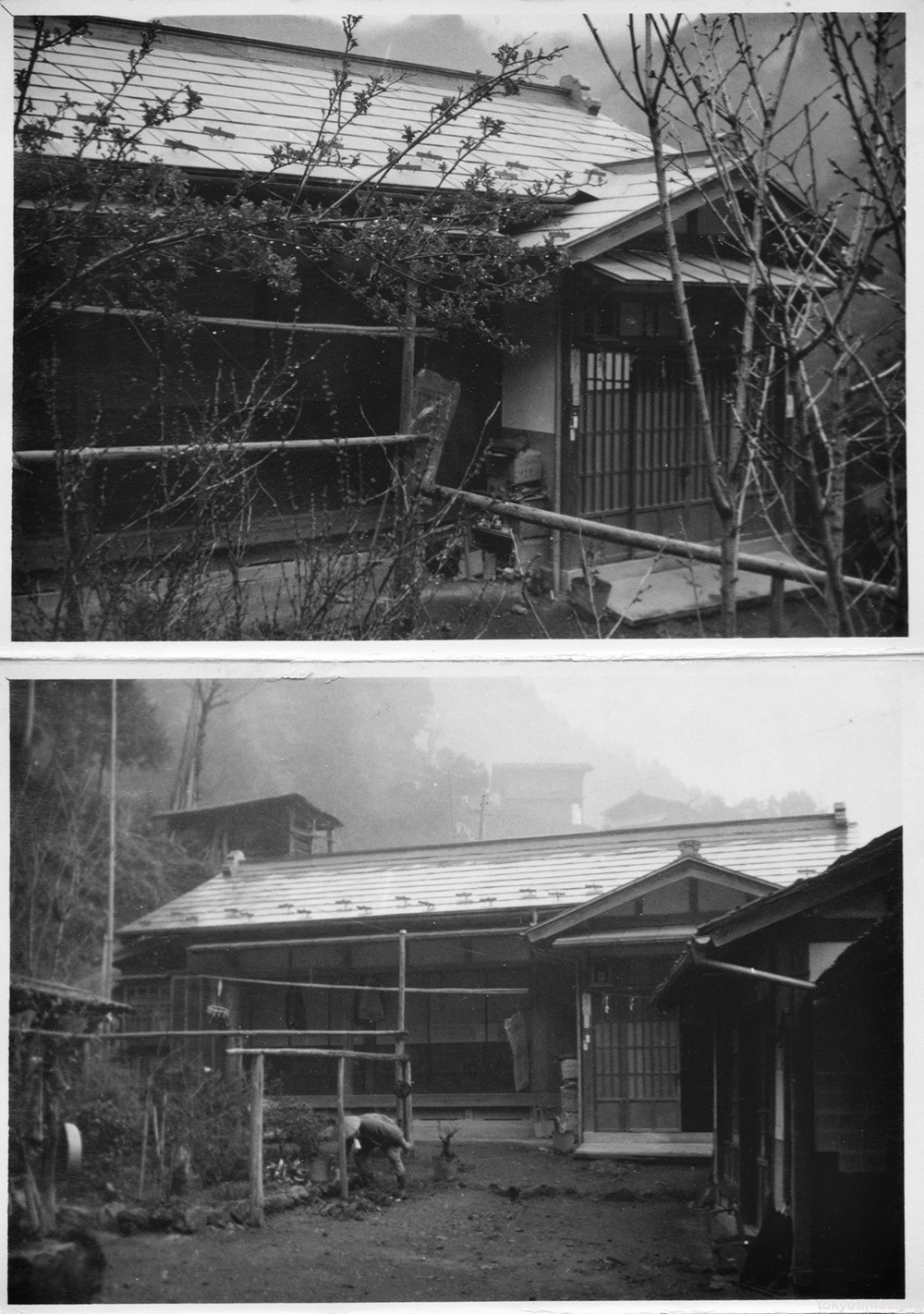
Hired by the forestry department, the residents lived a very different life compared to their city dwelling compatriots. Relatively isolated, food supplies and the like would have required forward planning, popping out for a bite to eat an impossibility and bears, rather than crime, a real concern. But regardless of the hardships, life there went on. Or at least it did until the late 1980’s. Then, presumably due to a lack of work, everyone simply left.
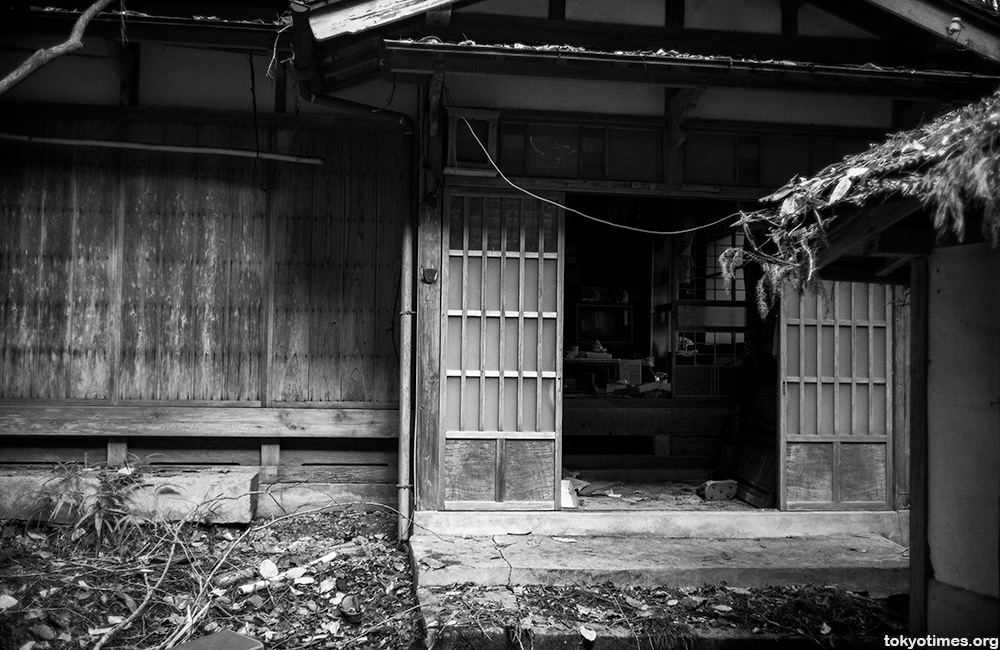
And when they did, they also left a good deal of their lives there, resulting in rooms that are now time capsules of sorts, offering a fascinating look at the tastes of the people who lived there — not to mention the times they lived in.
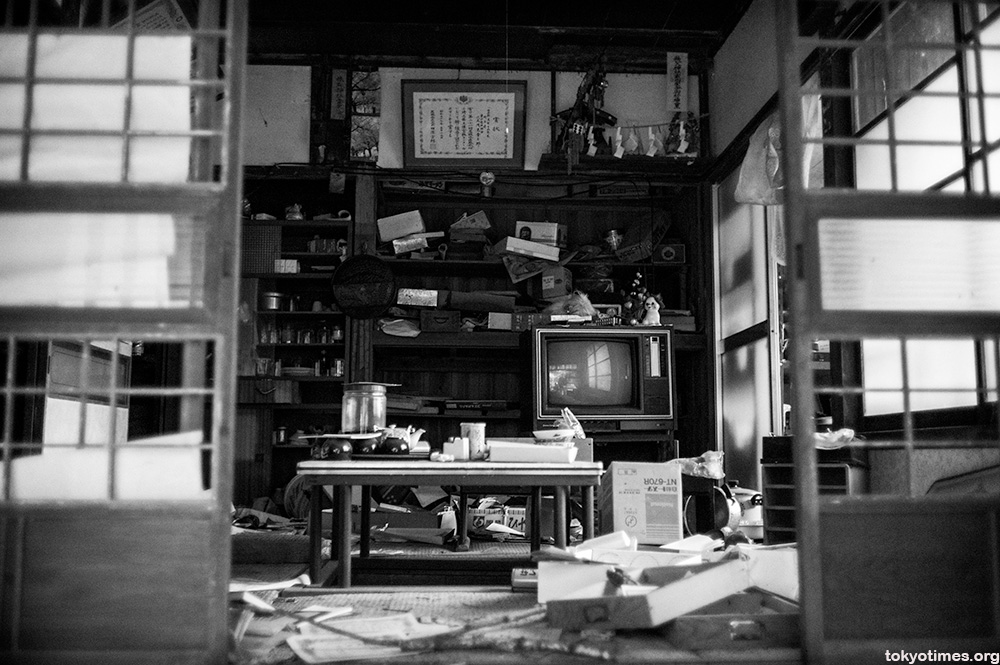
A period long before the internet and smart phones.
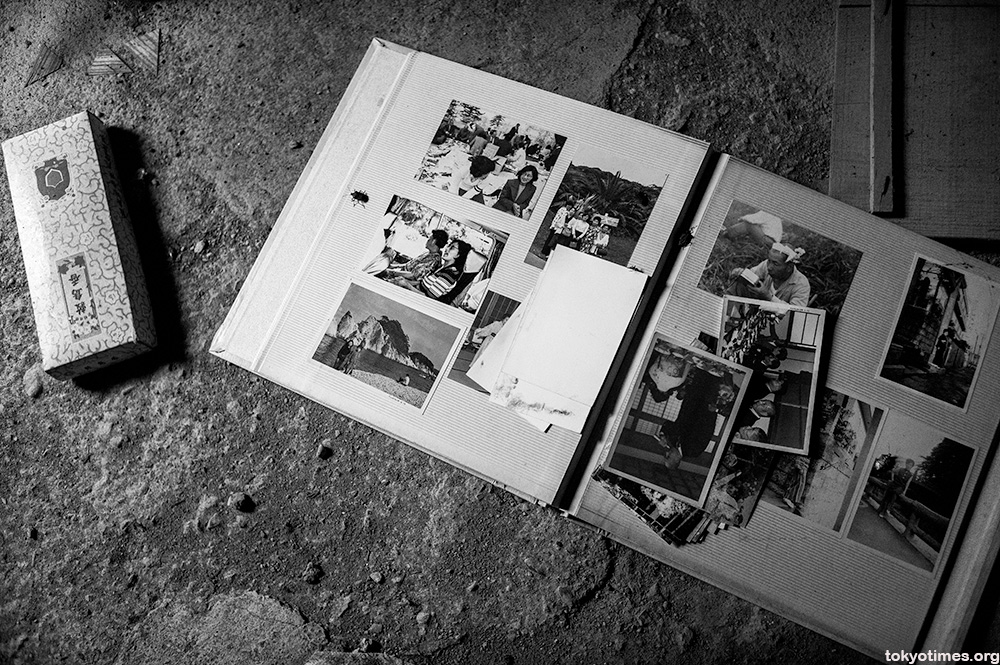
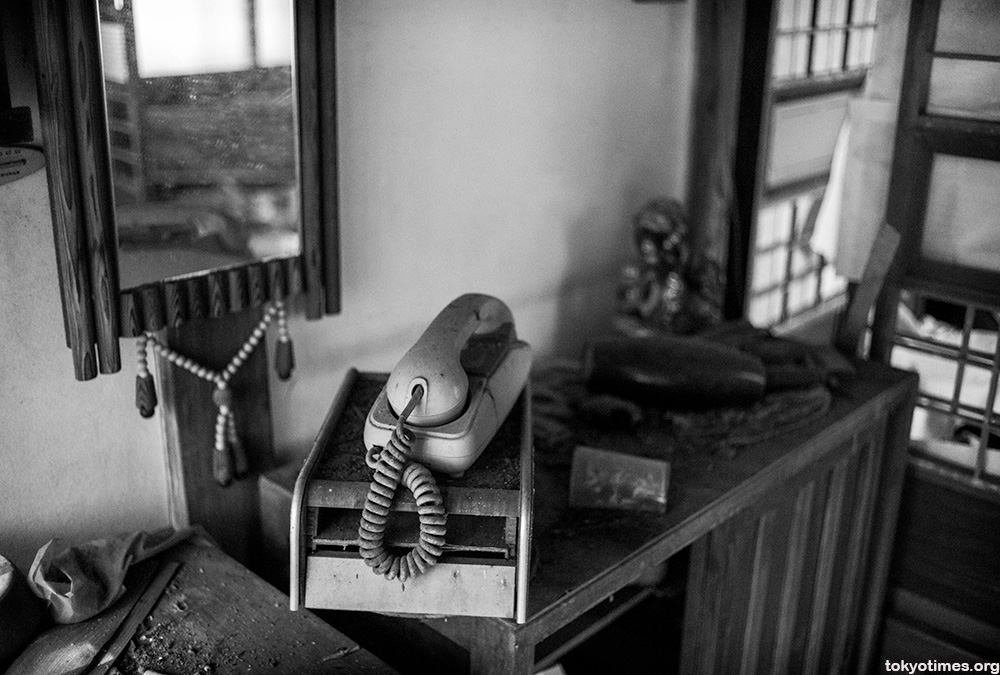
And even before Shintaro Ishihara became the loathsome, openly racist former Tokyo governor he is today. His youthful face masking at least some of the malice contained within.
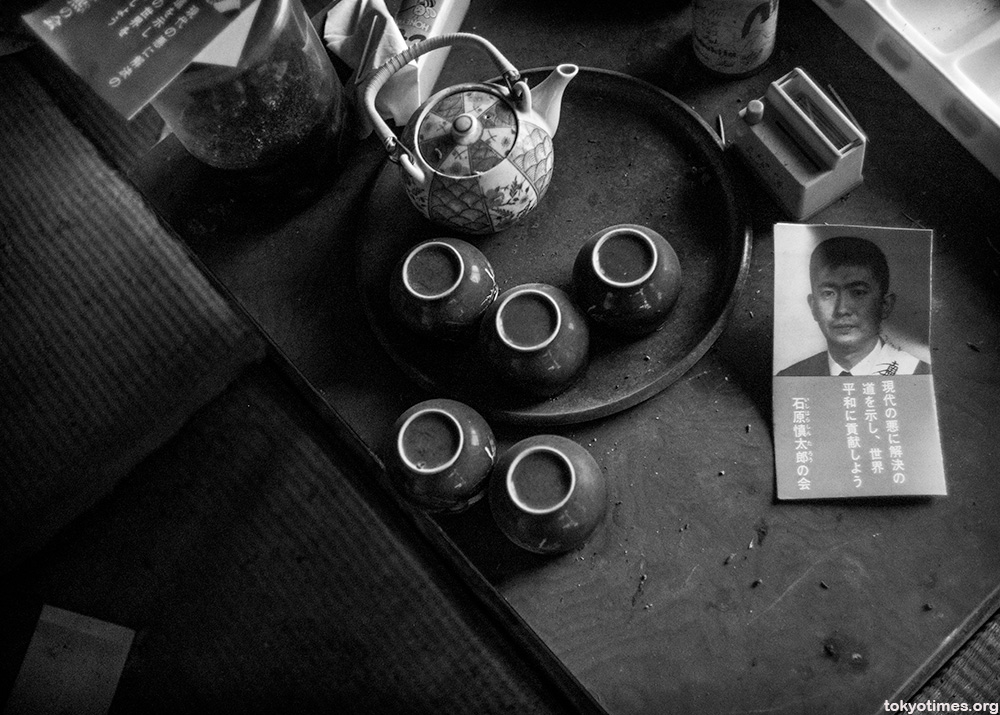
But politics aside, what’s most striking of all is the sheer amount of stuff left behind. The location most likely making travelling light a necessity — both logistically and financially. Meaning at times it’s almost like the people just disappeared. There one minute. Gone the next.
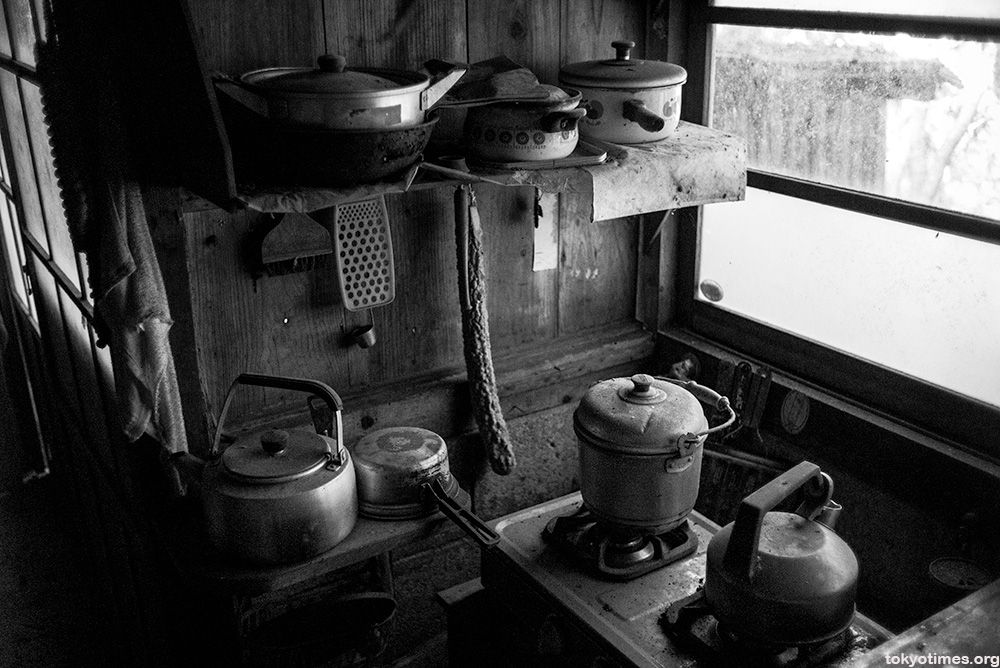
An element that, whether it be an abandoned school, hotel or house of the rich, exaggerates the silence. A quietness even more noticeable in a room once filled with music.
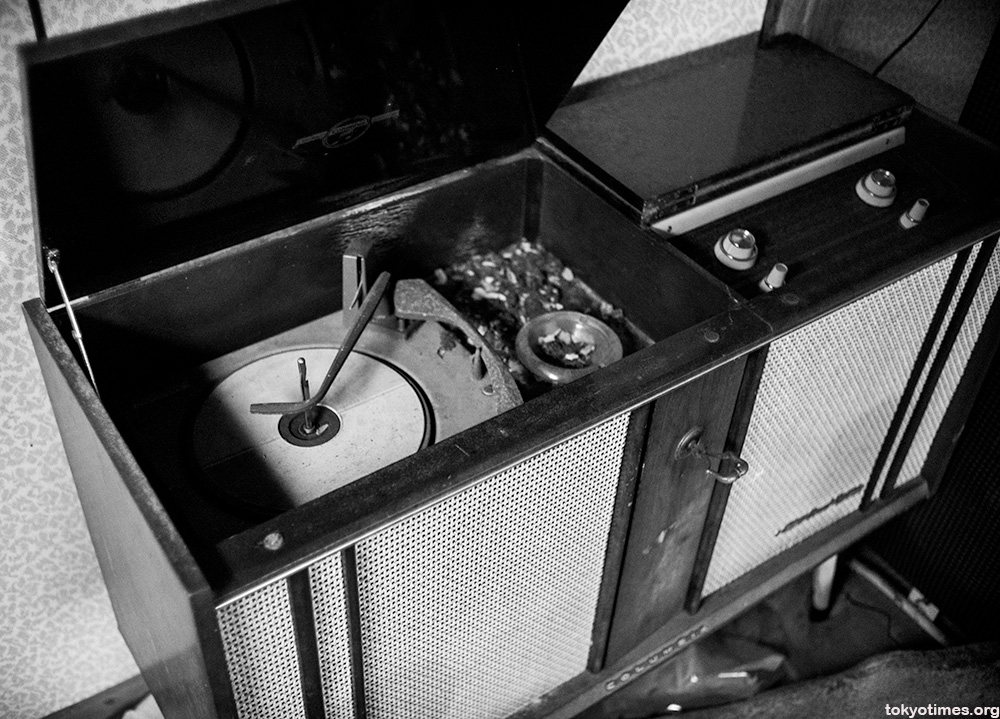
This track by Shinkawa Jiro being one of the records found with the turntable above.
And yet despite such music, the reassuring company of television was even more sought out. The central focus of such technology in each and every living room proving what an important part of life it was. Presumably both as company as well as a connection to the wider world.
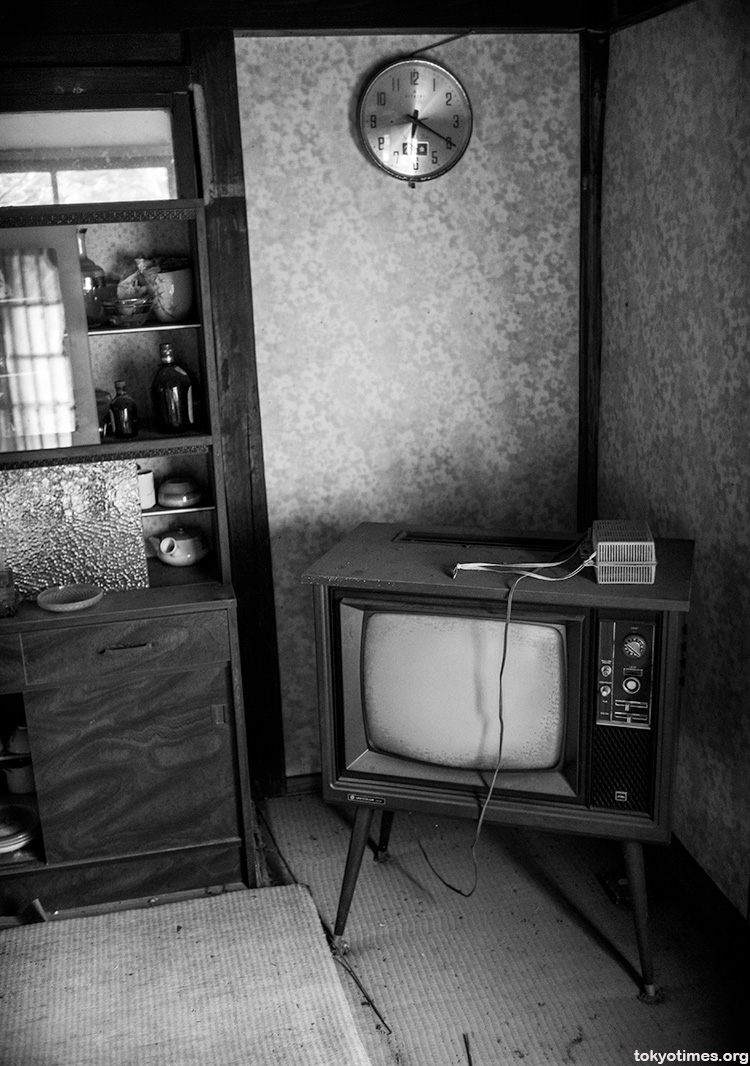
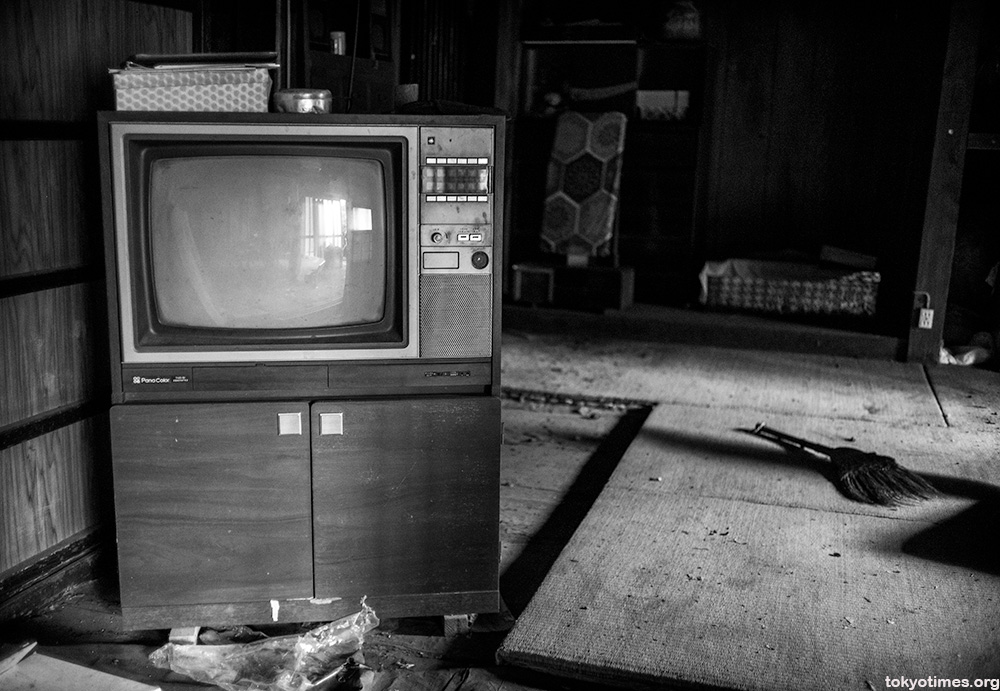
But these TVs haven’t been used in 25 years or so. Just like this rather forlorn looking favourite chair.
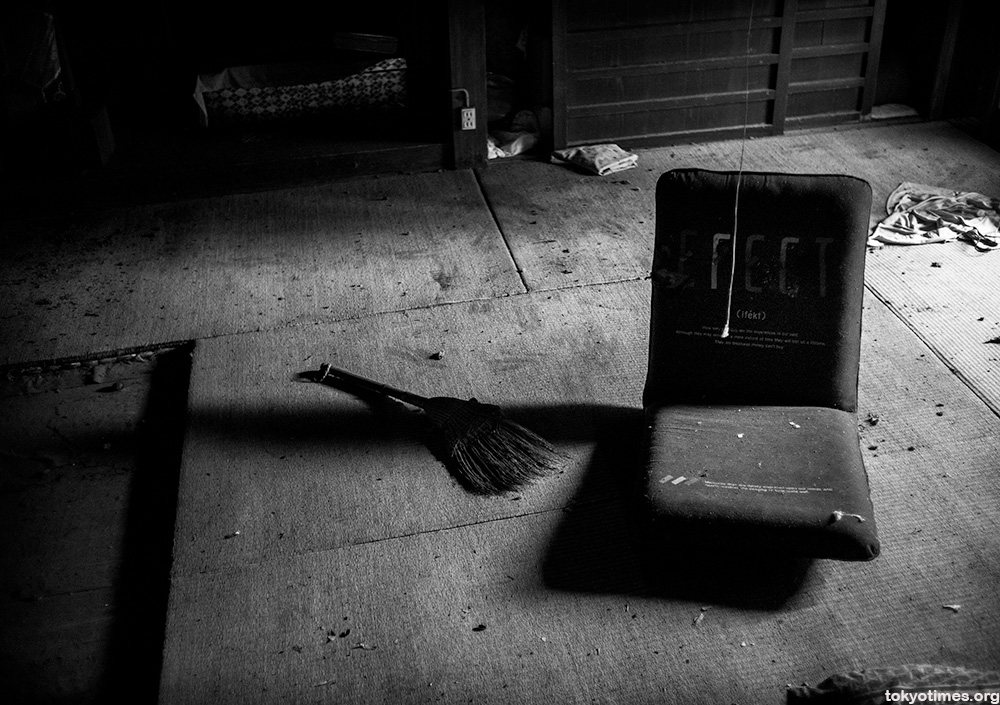
The same goes for these old toiletries.
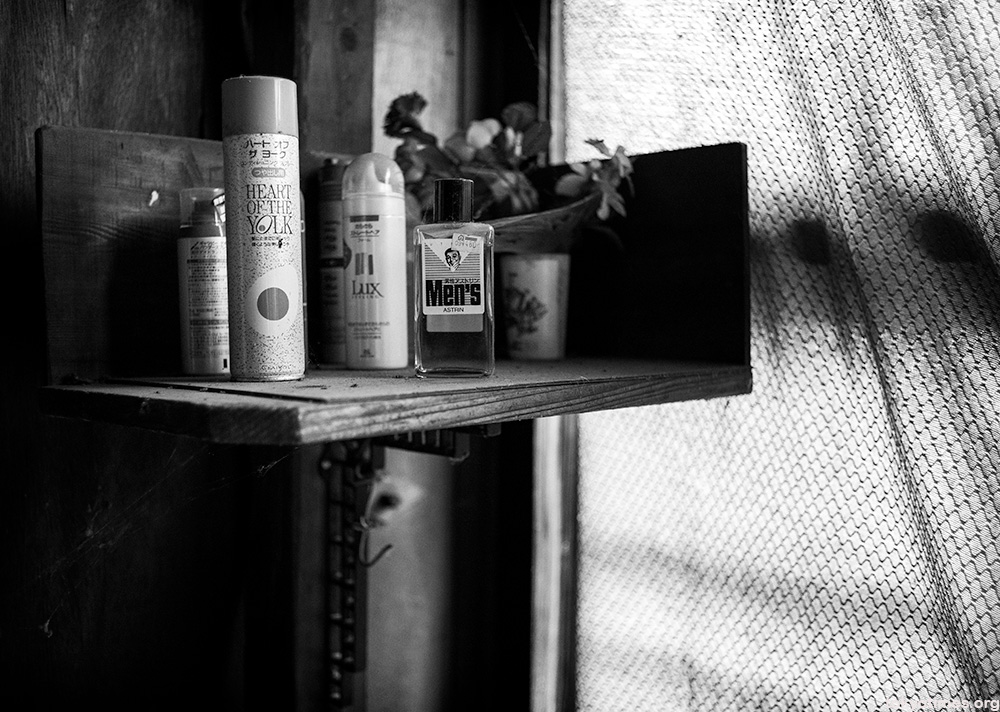
And a load of clothes now forever unworn in the wardrobe.
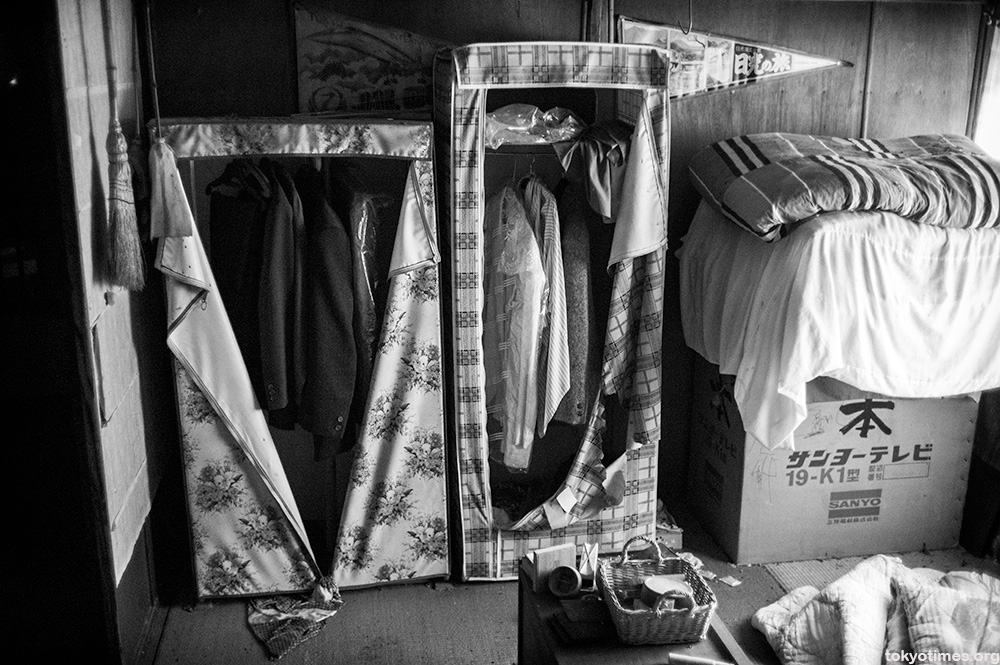
All of it set to be left for another 25 years. The only possible visitors being people like me and the occasional bear.
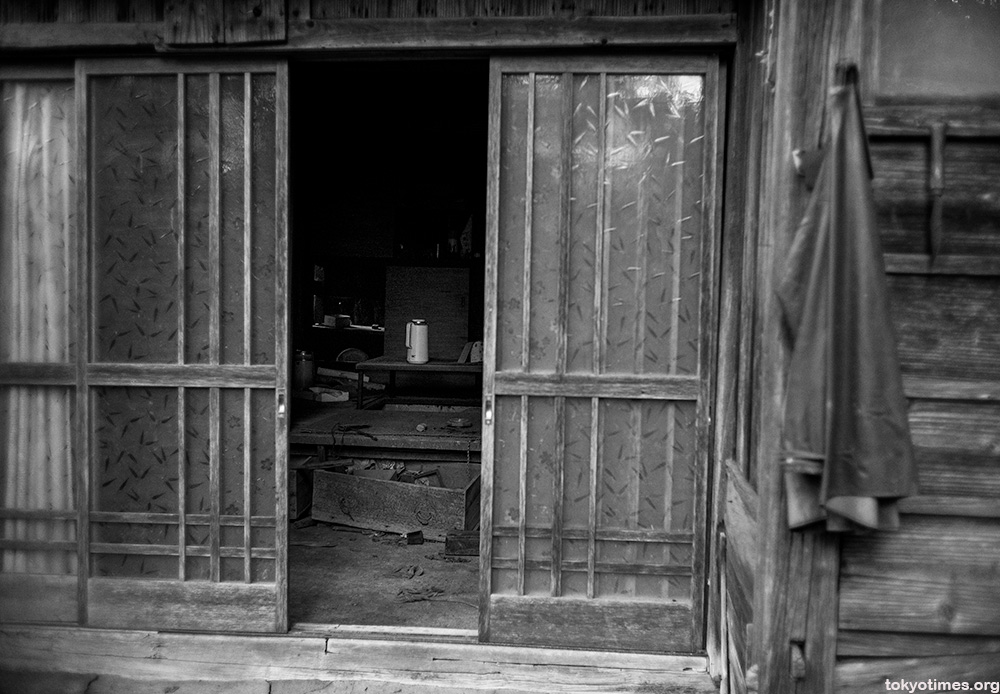
But there definitely won’t be any more callers.
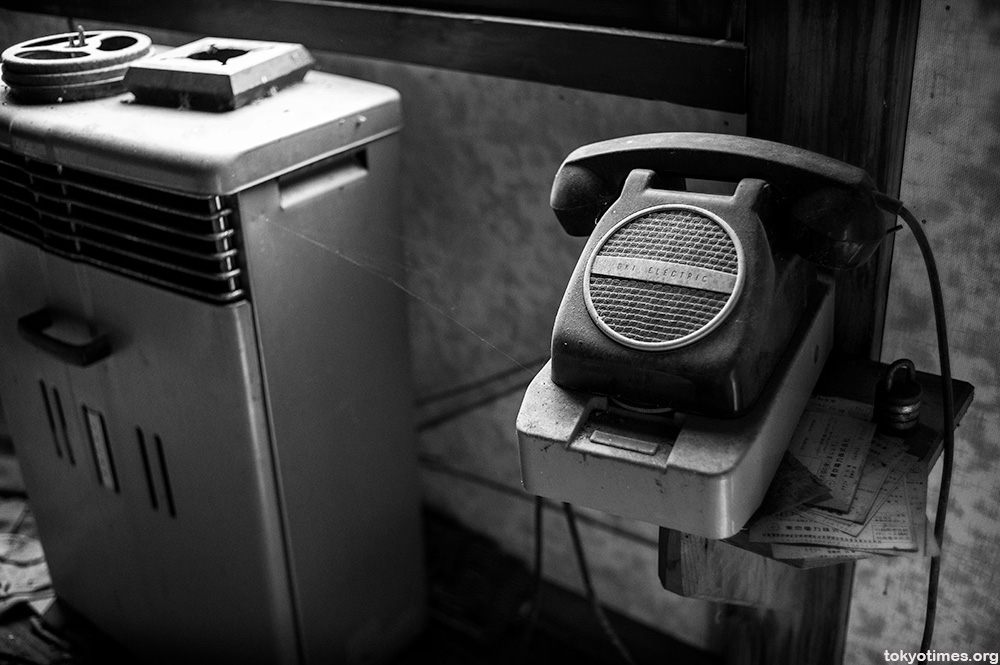
Marc says
Well done, as usual.
Lee says
Thanks! It had been a while, so good to visit another again.
Sean says
Awesome. Especially love the “Heart Of The Yolk” hair product?
Lee says
Yes, that’s quite a name, isn’t it? Not sure if that one is still in production.
john says
keep me searching’ for a heart of yolk..and I’m gettin’ bald.
Lee says
Haha, brilliant!
Only trouble is, that song will now never be quite the same again…
john says
..that’s a different one ;o)
Jake says
These abandoned buildings are always very atmospheric but this one especially so. I wish someone would shoot a film here just as it is, perhaps a one scene Nichole Kidman play adaptation.
Lee says
Yes, they all have their own, unique atmospheres. Even the individual houses felt different. Some quite welcoming in an old, decaying kind of way. Others somehow quite the opposite.
Don says
Well done as always; love the narratives.
Lee says
Thank you.
I never feel like I’ve done the places the justice they deserve, but if I’m at least getting some of what I felt across, then that’s a real positive.
ameiji says
Thanks for the story, Lee. Breathtaking.
Lee says
You are more than welcome. Good to hear you enjoyed it.
Lizzy says
Oh my how eerie! I think if I were one of the Tokyo homeless I might try to make a life here. Certainly seems more cozy than under a bridge. Unless a bear comes to call, I suppose…
Lee says
Some of the houses were relatively pleasant in an old, quite dirty way. But a few had inexplicably unpleasant vibes.
At least one bear had done its business some of the houses, so a lock would be a wise investment. Like an alternate and not very pleasant version of Goldilocks…
Willy says
Reminds of home ( once upon a time)!
Lee says
Ah, that’s right. You lived up in the mountains yourself, didn’t you? Exploring these houses, I can only imagine how cold it must have been from this month onwards…
Willy says
It was horrid. and then there was shoveling the snow. … got snowed in once and it took 3 days to dig the snow out of the 100m long driveway… “ah the country life” I foolishly thought before embarking on that adventure…
Lee says
Seeing places like the houses above, I can totally understand. You were a brave man. Not something I could ever do. At least not here.
Jeffrey says
All the haikyo in Japan look like the results of some zombie apocalypse, a plague or that the people were “taken” to heaven – why would you simply leave everything behind? The only time I’ve ever seen this in the U.S. was during the real estate melt down when people abandoned houses they could no longer afford leaving behind things they could probably not afford to take with them. Otherwise, unoccupied houses and commercial and public buildings here are emptied of anything usable (typically sold at auction) or the furniture and such is put in storage.
These wooden structure will eventually rot away, though it seems to take longer than one would expect in Japan’s rainy and humid climate. But everything else, made of Japan’s favourite building material, ferro-concrete, will last hundreds if not thousands of years.
Lee says
Yeah, it’s a strange one. The only thing in this situation is the relative isolation. Moving a lot of the heavy stuff would have been difficult, not to mention expensive. But that doesn’t explain leaving such personal like photos etc. very odd to leave that stuff behind.
A few of the structures are starting to look a bit worse for wear, but they are standing up pretty well all things considered.
But yeah, all those concrete structures will blight the landscape for countless generations to come…
LAObserver says
Lee,
Not that it really matters, but who owns these houses once they are abandoned ? I ask because here in the US the property ownership reverts to the state when property taxes remain unpaid for 7 consecutive years.
Lee says
It’s a good question, and one I sadly can’t answer. In some cases I presume the banks still own them, as huge loans must have been taken out. For these houses, however, I’d guess that the government – or at least local government – may have something to do with them, as the occupants worked in forestry.
Jacob says
How much are these selling for?
Lee says
They aren’t. They have simply been abandoned. The land itself may be for sale, but there again I have a feeling that it’s owned by the forestry department.
Lai Trân says
Amitabha ! i like this.
Susana says
Hi Lee, Im in love with this small village, this photos seem to take you back in time….I would love to visit it and see all the stories with my own eyes. Would you mind saying where it is located? Is not too far from tokyo right? Thank you very much.
Leina says
I guess the homes which were full of items were those of the deceased old people.
I think people which had left had took the time to pack their belongings. They probably haven’t taken everything but at least they wouldn’t have left their homes in a complete mess…
Though it’s only suppositions.